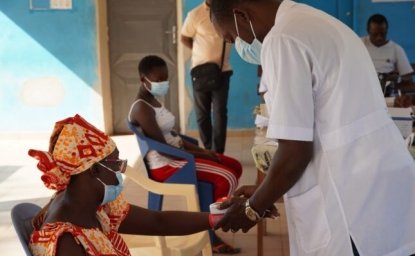In Canada, pundits sometimes use a clever observation to denote the difference in cultures between Americans and Canadians: the expiration notice on Canadian produced food says, ‘best before’ while American made food says, ‘consume by.’ The difference is supposed to illustrate a separation in positive versus negative outlooks, but these days it serves to illustrate a more literal interpretation of the difference in the country’s approaches to health policy – after all, the expiration of food is a health edict.
As of May 8th, more Americans have died from COVID-19 than Canada has confirmed cases.[1] With a recently released government projection detailing the U.S. could see as many as 3,000 deaths a day by June 1,[2] it is entirely possible that Canada’s total caseload may never pass the American death toll. Population and testing differences aside, the impact of the virus in each country is starkly different.
That difference is most evident at the subnational level. Despite the ever-increasing number of fatalities, many American states are reopening at a pace faster than Canadian provinces. New Brunswick, a Canadian province that has had two-week stretches of no new cases of COVID-19 and not a single COVID-19 fatality, has only recently opened golf courses and is expecting to reopen a limited amount of businesses in the near future.[3] By way of comparison, the state of Georgia, which has had just under 32,000 cases, never mandated that golf courses close and has already reopened hair salons, gyms, and even bowling alleys as early as April 24th.[4]
As each state and province approaches reopening in their own way, the nature of their intertwined economies means they will have no choice but to work together. Add to that interdependence a mutual desire for increased domestic production of goods, and the opportunity for growth between the two nations looks promising, but only if the reopening is done properly. In order to effectively reopen the North American economy, Premiers and Governors alike should follow a few important guidelines.
- Share Information Constantly: As the weather gets nicer and people’s patience with lockdown orders grows thinner, there will be an increasing amount of pressure on Governors and Premiers to reopen quickly. However, with 50 states and 13 provinces and territories creating their own plans, there will be considerable variation. That individualized feature of federalism provides an opportunity.
If one state creates a successful framework for the reopening of shopping malls, they can share the preventative steps they took with their counterparts. Likewise, if any part of a reopening leads to a spike in new cases, that lesson only needs to be learnt once for other jurisdictions to be warned and tread more carefully. Relying on existing cross-border institutions like the Council of the Great Lakes Region and existing relationships between states and provinces will be crucial in these efforts.
- Think Regionally: It is important to think regionally between states and within individual states. On the former, the Governors of New York, New Jersey, Pennsylvania, Connecticut, Delaware, Rhode Island, and Massachusetts have already shown this thinking by creating, “a joint multi-state agreement to develop a regional supply chain for personal protective equipment, other medical equipment and testing.”[5] Not every jurisdiction will have the resources, the health capacity, or the workforce available to make every product that is needed. By working together, including between Canadian provinces and American states, regional economies can recover faster.
On the latter, it is important to recognize that regions within states and provinces may be able to open sooner. Rural areas generally have seen fewer cases and may be able to reopen quicker, providing needed economic jolts to struggling communities. If those rural supply chains, particularly in the resource development sector, straddle state or provincial borders, opening lesser impacted regions will necessitate further coordination between those leaders.
- Eliminate Unnecessary Barriers: Throughout the epidemic, governments at all levels have suspended regulatory barriers to ensure a proper response to COVID-19. Zoning rules have been changed to allow for commercial activity in parking lots and health care regulations have been changed to better deploy staffing resources.[6] Despite this, little attention has been paid to interstate regulations between provinces and states. As the economy begins to truly reopen, identifying and eliminating unnecessary regulatory barriers will be key.
Imagine the waste if Ohio regulates that all semi-trailer truck drivers must wear 3M masks while Indiana only allows masks made by Kimberly-Clark. Though it sounds ridiculous in concept, Canadian provinces cannot even settle on a country wide regulatory definition of a coffee creamer. These regulatory barriers can and will happen; the key is to identify them and rectify them as quickly as possible.
- Account for Citizens Actions: Lastly, just because Governors and Premiers announce that things can open, does not mean they will open. In Georgia, more than 100 restaurants are choosing to stay closed to dine-in patrons despite being allowed to serve in-house.[7] In Canada, Prime Minister Justin Trudeau suggested he is unsure if he would send his children back to school if they were reopened soon, a sentiment likely shared by many parents.[8] Even if case transmission is low, the economy will not return in full force unless leaders can jointly enforce restrictions and measures that ensure citizens of their continued safety.
Contrarily, if Governors and Premiers wait too long or act out of step with each other, citizens may flood across nearby state and provincial lines to attend attractions or find work, creating long-term challenges for both healthcare providers and subnational economies. In Canada, the town of Lloydminster is on both sides of the Alberta and Saskatchewan border, but when it comes to reopening, the entire town will follow Saskatchewan’s plan that will see reopening happening sooner.[9] Though most Premiers and Governors will not have to worry about entire towns opting for another jurisdiction’s reopening plan, they will have to worry about their citizenry doing so. Reopening should not be a race to the bottom. Adjacent leaders will need to work in tandem, avoiding the short-term benefit of first mover advantage against the long-term consequences of a stubborn virus.
Though the virus does not recognize provincial or state borders, the institutions that are jointly fighting it do. In many cases, Canadian Premiers and American Governors will need to work together to create a proper and sustained response to COVID-19 through shorter-term health measures and longer-term economic responses. If they adjust their responses based on citizen reactions, work to eliminate regulatory barriers to recovery, tackle the problem on a regional basis, and constantly share information, they will put themselves – and their people – in the best possible position to succeed.
[1] Canada has just under 66,000 total cases as of May 8th, with the United States having just under 76,000 deaths as of the same date.
Government of Canada, “Coronavirus disease (COVID-19): Outbreak update,” (May 2020).
And Johns Hopkins University & Medicine, “Mortality Analyses,” (May 2020).
[2] Iati, M., Sonmez, F., O'Grady, S., Kornfield, M., Pell, S., Buckner, C., Itkowitz, C., Armus, T., Noori Farzan, A., and Wagner, J., “U.S. coronavirus deaths top 70,000; Pence says White House task force might be disbanded,” The Washington Post, (May 2020).
[3] Alexander Quon, “New Brunswick to enter 3rd week without any new cases of COVID-19,” Global News, (May 2020).
And Elizabeth Fraser, “N.B. COVID-19 roundup: Moncton airport passenger tests positive for coronavirus,” CBC News, (May 2020).
[4] 32,000 as of May 8th, George Department of Public Health, “Georgia Department of Public Health Daily Status Report,” (May 2020).
And Dakin Andone, Lindsay Benson, and Amir Vera, “Georgia business owners are conflicted as the state reopens hair salons, gyms and bowling alleys,” CNN, (April 2020).
[5] New York State, “Amid Ongoing COVID-19 Pandemic, Governor Cuomo, Governor Murphy, Governor Lamont, Governor Wolf, Governor Carney, Governor Raimondo & Governor Baker Announce Joint Multi-State Agreement to Develop Regional Supply Chain for PPE and Medical Equipment,” (May 2020).
[6] Jon Hartley, “Regulatory Relief Can Save Lives,” City Journal, (March 2020).
[7] Christina Maxouris, “Georgia's governor said they could reopen. More than 50 restaurateurs said in a newspaper ad they're not ready,” CNN, (May 2020).
[8] The Canadian Press, “Trudeau not sure if he would send kids back to school,” CTV News, (May 2020).
[9] CBC News, “Lloydminster to follow Saskatchewan lead to begin phased-in reopenings next week,” (April 2020).
Author

Executive Director, StrategyCorp Institute of Public Policy and Economy

Canada Institute
The mission of the Wilson Center's Canada Institute is to raise the level of knowledge of Canada in the United States, particularly within the Washington, DC policy community. Research projects, initiatives, podcasts, and publications cover contemporary Canada, US-Canadian relations, North American political economy, and Canada's global role as it intersects with US national interests. Read more

Explore More
Browse Insights & Analysis
Russia’s Security Approach to Public Health

WIPO is AWOL


